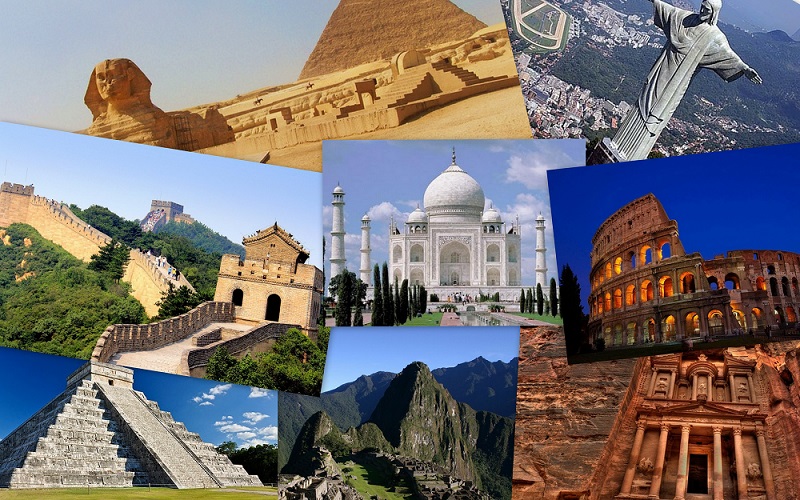

Quite poetically and rather aptly, the Ancient Egyptians called the Great Pyramid of Giza by the name of ‘ Ikhet‘, which simply translates to ‘Glorious Light’. And, considering that there were limited pollution and smog circa 2500 BC (as opposed to our contemporary times), the Great Pyramid of Giza must have been an otherworldly magnificent spectacle during the time of its completion – with ethereal, glass-like facades basking in the glory of the effulgent sun.

The end result of such high levels of polishing yielded immaculately smooth surfaces that were incredibly shiny beyond reckoning.

And, according to the documentary, the stone surfaces were almost polished to perfection with a range of abrasives like sandstone, brick, and fine sand – in a process not only requiring time and effort but also refined skills of craftsmanship. These slanting yet flat-topped blocks were primarily used for the external facades of the monumental structure. In a short film made by the Smithsonian Channel, Jacquelyn Williamson, a Harvard University Egyptologist, gives us details on how the ancient craftsmen and artisans carved and finished the humongous blocks of limestone that are also known as ‘casing stones’ for the Great Pyramid of Giza. This massive scope was achieved by the use of a whopping 2.3 million stone blocks (ranging from 2 to 30 tons) – that comes to an average of 800 tons of stones being installed each day, with 12 stones being precisely placed every hour! Few of these stones (especially, the ones used in the inner chambers) weigh more than 50 tons, and yet they were transported to the site from Aswan, which is over 500 miles away. In spite of the slight reduction in dimensions, the monumental giant has a base area of around 570,000 sq ft (equivalent to almost 10 American football fields) and a gargantuan volume of 88 million cubic ft (or 2.5 million cubic m) that accounts for an extraordinary 5.9 million tons of mass. Later on, the compound was expanded with the inclusion of the two other big pyramids of Khufu’s successors – Khafre and Menkaure and the extended spatial scope is now known as the Giza pyramid complex (which had a huge wall enclosure that was known as the Wall of Crows).Īs for the mind-boggling figures associated with the Great Pyramid itself, this first among the Seven Wonders of the Ancient World rises to a height of around 455 ft – the tad reduced scale being due to soil erosion and the loss of the pyramidion, which was the uppermost capstone of the structure. Generally believed to be constructed as a mortuary monument for Khufu (or Cheops in Greek), who was the second Pharaoh from the Fourth Dynasty, the gargantuan structure is not only the oldest but ironically also the only surviving monument from the Seven Wonders of the Ancient World.Īs for its architectural history, the Great Pyramid was probably completed in 20 years, and as such was a part of Khufu’s necropolis complex that also consisted of large temples and smaller pyramids. The incredible architectural specimen was built in around 2560 BC and held the record for the world’s tallest structure for a whopping 3,800 years with its then-impressive height of 481 ft (146.5 m). The Great Pyramid of Giza from Ancient Egypt has always demanded awe and recognition from us ‘mortals’, and rightly so. So without further ado, let us take a gander at the fascinating history and visual reconstructions (conveyed by images and animations) of these incredible man-made Seven Wonders of the Ancient World. However, in this article, we will only cover the ‘traditional’ Seven Wonders of the Ancient World – as mostly compiled by Philo. Antipater, on the other hand, included the Walls of Babylon in place of the Lighthouse of Alexandria. To that end, according to Herodotus, the Egyptian Labyrinth was worthy of inclusion as a wonder before the pyramids. Interestingly enough, there were other ancient writers who referenced or even made their own lists of ‘sights to see’, including Herodotus, Callimachus of Cyrene, Diodorus Siculus, and Antipater of Sidon. The text mentioned the theamata (roughly ‘things to be seen‘ in Greek) of the world, which basically translated to the incredible sights of the time.

From the historical perspective, the list of Seven Wonders of the Ancient World comes to us from an incomplete manuscript known as the Seven Sights of the World (which incidentally only listed six monuments), possibly authored by Philo of Byzantium in circa 225 BC.


 0 kommentar(er)
0 kommentar(er)
